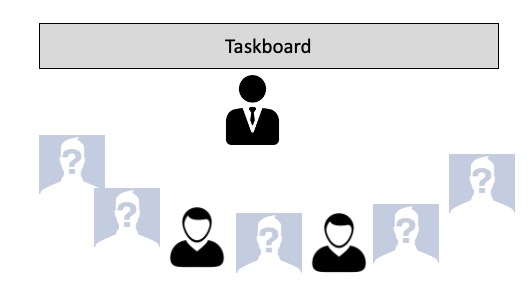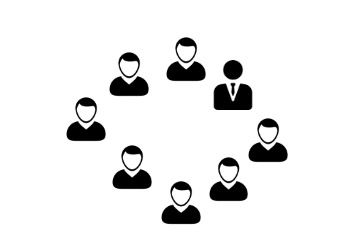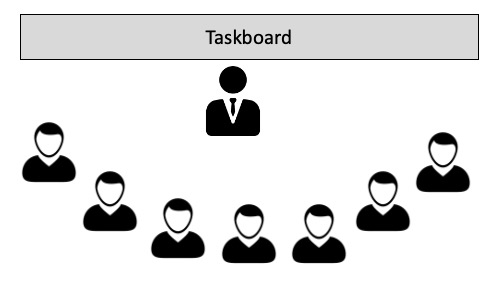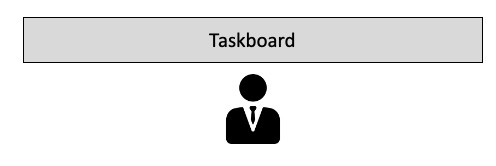Meetings are an important part of management. Clarity about the status and coordination of further activities require personal exchange. The image of these meetings has suffered in the past. What is the reason for this? Management styles are evolving away from directive directives toward more self-organization and greater agility. The challenge is to allow old management tools to grow with us and to integrate new ones. The targeted reflection of the culture of meetings is an important step on this path.
Identify weaknesses and leverage strengths
There are many ways to design a meeting. We will look at six different patterns. All ways of conducting meetings have strengths and weaknesses. Compare with your own experience and reflect on what worked well and where changes make sense. If you go through this process a few times for different meetings, you’ll be surprised how quickly positive change is possible.
Pattern 1: The reluctant meeting
You have prepared well and invited people to the meeting on time. From some of the attendees you have received neither acceptance nor rejection. Now the time has come and only two out of seven people have shown up, two others arrive ten minutes late. How do you feel? Do you have doubts about whether you are being taken seriously as a leader at all?
The hallmark of leadership is to lead yourself and to take others with you. That requires a minimum of dominance. Assert yourself, don’t let up until you have the commitment of the participants. Ask for help if someone doesn’t show up. Maintain your strengths. Continue to stay well prepared, keep your task board current, etc.

Pattern 2: Informal exchange
The meeting takes place in a pleasant atmosphere and you are in the middle of it. The exchange is lively and time flies. In the end, tangible results are missing and next steps remain unclear.
This is a sign of a lack of structure. There are good tools for a goal-oriented exchange. Status and the tasks can be visualized excellently with a task board. Movable elements, such as cards, enable quick adjustments and increase agility. This makes it possible to work in a results-oriented manner, even in a relaxed atmosphere.

Pattern 3: The center
You pull the strings and all team members keep you on top of things. This feels good, but pushes you to the edge of your endurance. You are technically good, but without you, things hardly move forward.
Realize, a team is much more than the sum of its individuals. Be courageous and trust your people to do something. Define tasks and goals, but stay out of the implementation. This takes some practice for both sides. The results will speak for themselves and lift the whole team to a new level of agility.

Pattern 4: The Lonesome Rider
Actually, you think most meetings are superfluous. Isn’t it enough to be well informed and to summarize everything in a status report? At first glance, this can save a lot of time.
Good management relies on teams. The interaction of different skills and characters quickly leads to good results. Think about a new culture of leadership and coordination. In this way, your strengths will also be put to optimal use.

Pattern 5: The reporter
It is enough for you to be broadly informed about the status. To do this, have one of the team members keep you up to date.
Ask yourself how much you identify yourself with the team and the tasks. Leading the team includes leading by example and taking a genuine interest in people. Get involved in content implementation with the concrete hurdles of everyday life. This enables practical solutions.

Pattern 6: The boring meeting
Something is not right in the meeting. Hardly any of the participants take an active part. On the side, e-mails are answered or something else is typed into the laptop. Time is being wasted rather than working on results.
The strengths of a team come into their own best when everyone is involved. Let team members design individual parts. Choose a process and content that adds value for everyone.

It all comes down to the right mix
A successful meeting is characterized by communication within the team. At the end, the status and upcoming tasks are clear. Ideally, this can be achieved when everyone stands in front of the task board on an equal footing, reports on progress as well as difficulties, and discusses the next steps. Monitor the process and develop the team with each meeting.
Five tips for effective meetings
- communication makes the difference
It’s not about self-promotion by the leader. It’s asking team members to share information. It’s not just about results, but also the associated learnings. He follows up on open points. - task board as a central instrument
Visualization helps enormously to capture status, goals and steps towards them. A task board demonstrates this in the truest sense of the word. Due to the dynamic structure, developments and new aspects can be made directly visible. - prepare questions
Targeted questions enable structured work. What have I already implemented? What am I currently working on? What are the obstacles? Where do I need support? It makes sense to set time limits for the answers. This gives a concentrated overview of the overall status. 4. - the team is the actor
The team has worked on the tasks and should also perform the corresponding actions on the task board. This creates more identification and satisfaction when individual items are completed. It makes sense to provide the individual tasks with name abbreviations. In this way, responsibilities are clearly assigned. - Overview through clarity
Especially when many tasks are processed in parallel, it is important to ensure clarity. Mark completed tasks accordingly and remove them from the board as soon as possible. Do not assign too many or too few tasks at the same time. This prevents the feeling of being overwhelmed as well as being underchallenged.
Image: https://pixabay.com/de/photos/meeting-polaroid-gruppe-team-2500006/
[werbung]


